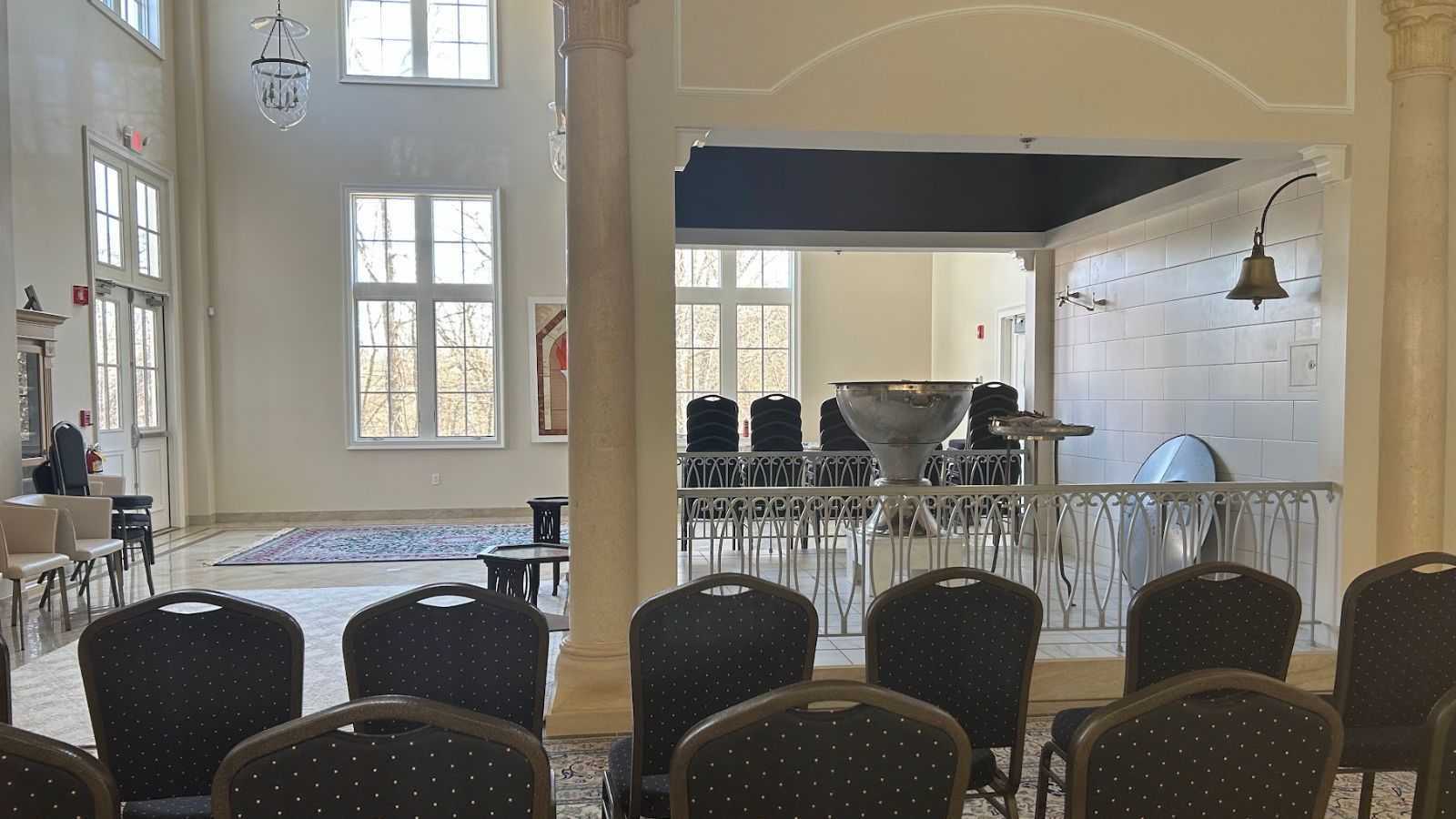
NORTH BRUNSWICK, N.J. — Every day, Arshis Pavri lights a small tealight candle in his home in this New Jersey town an hour’s drive from Manhattan. The flame is magnified in the reflection on its container, a small glass etched with the profile of a bearded man — the Zoroastrian prophet Zarathustra. The prophet, head covered with a topi, or hat, and hands joined in prayer, is balanced atop phoenix-like wings. There are three layers of wings, one layer for each of Zoroastrianism’s three values: Humata Hukhta Hvarshta, or “good thoughts, good words, good deeds.”
Pavri wears a thin white cotton shirt, called a Sudreh, with a quarter-sized square pocket sewn in at the dip of the V-neck. The pocket holds good deeds, he says. He wraps a long wool shoelace-like wool cord, called a Kusti, three times around himself, just below his navel — one knot in the front and one in the back. Before beginning his favorite prayer, the Tandarosti prayer for wellness, Pavri faces the tealight candle’s flame — an ode to the divine element of fire, a tangible representation of the immaterial Ahura Mazda, or God.
“I feel wonderful,” Pavri says. “I think prayer is a great outlet for me, and I feel very connected, but that is because maybe that’s just how I am as a person.”
Pavri, 64, immigrated from India about 35 years ago in 1988. Today, he is one of an estimated 14,405 Zoroastrians in the United States, according to World Population Review. At around age 12, Pavri was ordained to the priesthood in Mumbai, India. There, he learned to lead prayers from ancient texts like the Avesta, written in the dead language Avestan, and perform blessings called Jashans. Pavri is a part of a smaller community of Zoroastrians called Parsees who left Iran for India sometime around the 9th century CE.
“I became very religious after my Navjote [religious initiation ceremony],” Pavri says. “I used to go to the Agiary [house of worship, called the fire temple] every day. I was very religious right from the beginning.”
Pavri comes from a blessed family — a lineage of Zoroastrian priests, or Mobed. Hereditary priesthood has been the tradition since the religion’s beginning around the 6th century BCE in Persia. Some priests are called Dasturgi, priests qualified to perform the boi ceremony that tend the sacred flames in the inner-sanctum of an Agiary.
The closest house of worship to Pavri is located in Suffren, New York, about an hour away from him. The building is not an Agiary because it lacks a sustained fire. The Dar-E-Mehr opens roughly one day a month, as well as for the twice-annual Persian New Year, or Navroz, celebrations.
Usually, each month, priests perform the boi ceremony while lighting the fire each month, but the Dar-E-Mehr’s current venting system has a mechanical issue pending fixture, says Arzan Sam Wadia, president of the Federation of Zoroastrian Associations of North America.
Wadia, 50, immigrated from India to the United States in 1998 and started a Zoroastrian news website called Parsi Khabar in 2003. After improving ZAGNY’s website around 2010, he became part of the board and has been a key leader in New York’s Zoroastrian community ever since.
“We are not like a church where every Sunday morning 500 of us get together and praise the Lord,” Wadia says. “We are not like the Muslims who on a Friday afternoon will pray together. We all pray on an individual basis. It’s a very inward-looking faith.”
At his home in New York, Wadia lights an oil divo, similar to Pavri’s tealight. He sets it down on his prayer table that features a photo of Zarathustra alongside images of passed loved ones. Fire is the purest element, he adds, as it cannot be polluted like air, water or earth can be.
“There’s always this talk that we’re ‘fire-worshippers,’” Wadia says. “So, are we fire-worshippers, or do we worship the fire? There’s a subtle difference to it. When I think of the Prophet Zarathustra, I kind of have a picture in mind, but there is no picture of Ahura Mazda, so to me, this live fire is the representation of that.”
Wadia said although the prayer rituals may be personal, it makes the cultural and social aspects of the faith even more important. This includes celebrating Navroz with the community, studying Avestan prayers, wearing the Sudreh and Kusti and eating Parsi food, like Akuri and Dhansak Masala.
Pavri will not attend the Dar-E-Mehr on Sunday. Pavri is not well and can’t drive himself to the temple like he used to, so instead, he is content with his tealight candle.
“When I pray, I pray for a lot of people,” Pavri says. “I don’t pray for myself, but I pray for a lot of people who I know need help or they are in bad shape health-wise.”
After Pavri finishes his prayers, he allows the flame to burn out naturally, so as not to pollute the sacred fire with saliva. As the flame sputters out, his makeshift fire temple returns once more to a bedroom in North Brunswick, New Jersey.
